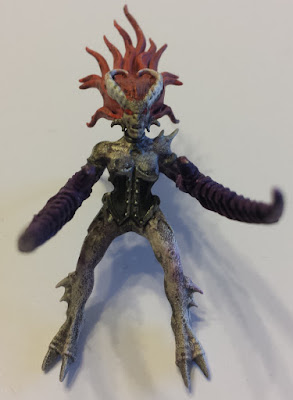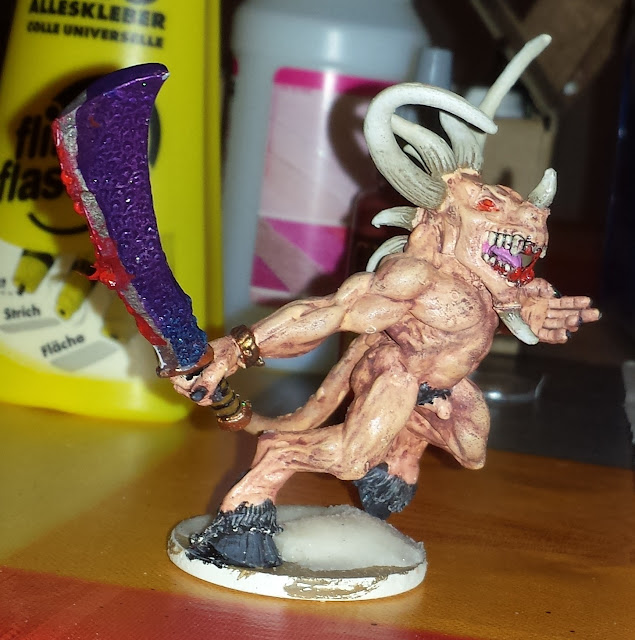This is a How-to similar to my previous How to paint Bloodletters.
Introduction
Not much to say really, if you've already read the introduction part of the previous post. I'll keep the techniques simple and efficient, so as to bring the girls to a good standard in a relatively short time. I'd just like to point out that I'll keep them looking as canonical as possible.Getting to it
Step 0. Extract your models from the sprues and glue them together. Not detailed here.
Note. You might not want to glue them completely together. Above, the riders are placed on their steeds, but they are not actually glued on. It's much easier to paint that way.
Step 1. Prime your models in white
Priming the models in white is even more important this time, since we're going to use that as a half-basecoat. You'll see what I mean with the next step.Step 2. Purple wash
I don't have a purple light enough to work as a skin color here. I didn't know about advanced techniques (such as layering) back when I painted these models; but even if I did, I was looking for a fairly quick way to do this. (And probably so are you, if you're reading this.)So here goes: heavily water down Hormagaunt purple until it reaches a wash-like quality. Then apply generously to the model.
I don't have a picture of this, but take a look further down. You can see this color on every model, where skin is visible.
Step 3. Basecoat
Steeds: purple scales, grey claws, green tongues, white horns, leather brown saddles, red eyes, silver anklets, dark green bases. I've mixed up a pinkish color for the frills; this is the same mix I've used for the girls' hair. Also, since no slaaneshi model is complete without breasts, I've applied some fleshtone to the steeds'.Riders: white horns, red eyes, grey claws on the feet. Silver and black on the armor: I've used black as the base and colored the raised areas in silver to give the impression of black leather framed by steel. Purple on the hands/claws - the same color used for the steeds. Pinkish hair; I've mixed this color using red, orange, white and purple.
Neither the white graffiti primer, nor the purple wash technique is perfect on its own. As I've said previously, the spray paint tends to be too thick. The wash-like paint tends to flow around the model, not leaving a uniform layer. However, these girls look perfect. These aren't historical miniatures - they're Daemons. The small discolorations and imperfect skin only reinforces their otherworldly appearance.
(still not glued together)
Step 4. Black wash
Slightly water down the black wash, then apply over the entire model. This pops out all the details and tones down the colors.Step 5. Drybrushing
Drybrush every area with the same color it was basecoated with. As per the theory, this leaves the recesses shadowy, while brightening up the middle of the area for a basic lighting effect.You can drybrush the skin areas with either the same shade of purple, or white; depending on whether you'd like to brighten or darken the skin tone.
Step 6. Basing
For my slaaneshi daemons, I'm going for a green grass / forest soil effect on the bases. They spread happy feelings - right up to the moment they kill you!Step 7. Glue the riders in place
This is final color scheme. I know, it looks somewhat rough. However, on the battlefield, you are less likely to see them up close and well illuminated. You will rather see something like this:
... and the human eye will make sure to blend the colors together, creating perfect transitions for you.
































































